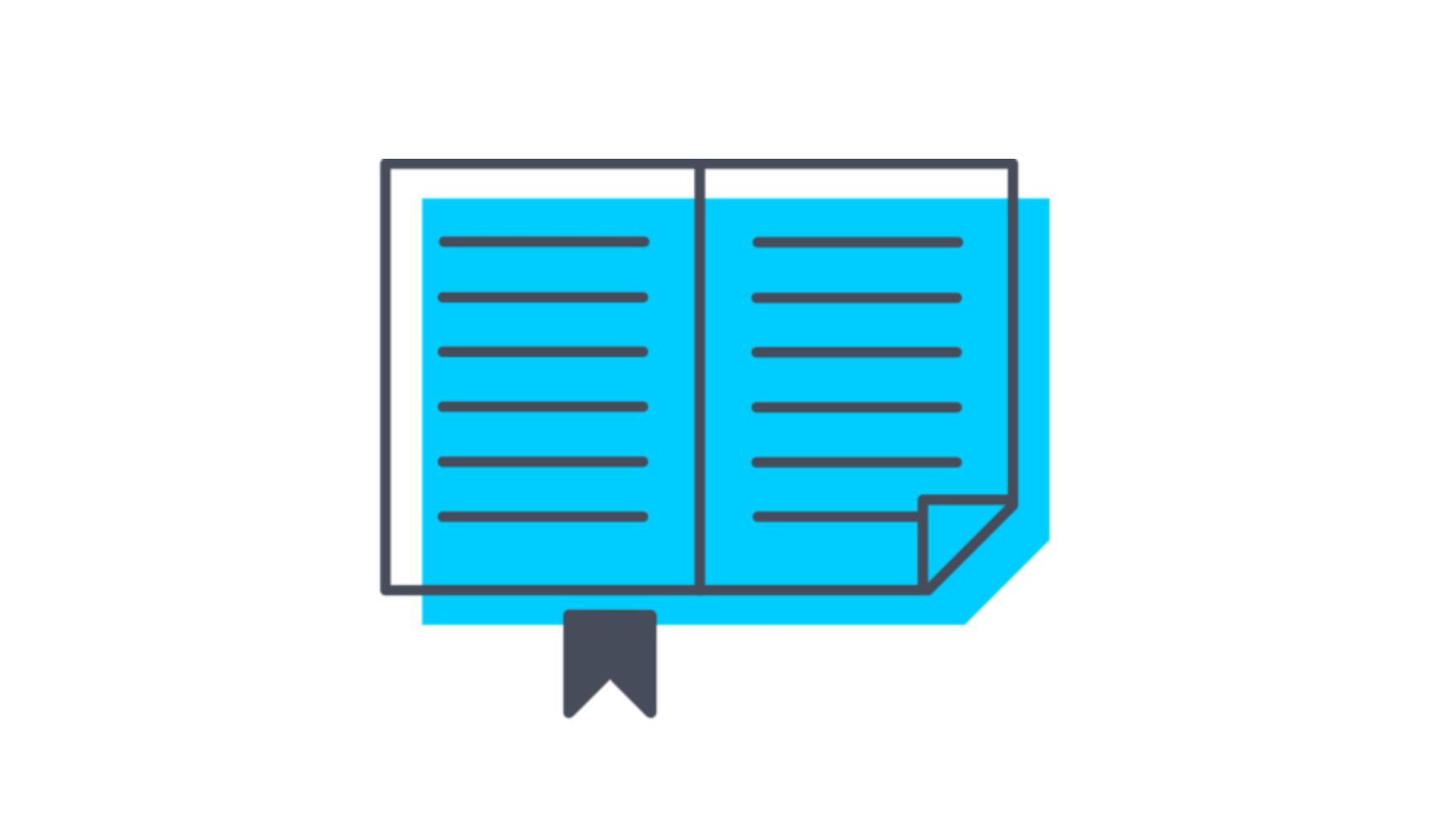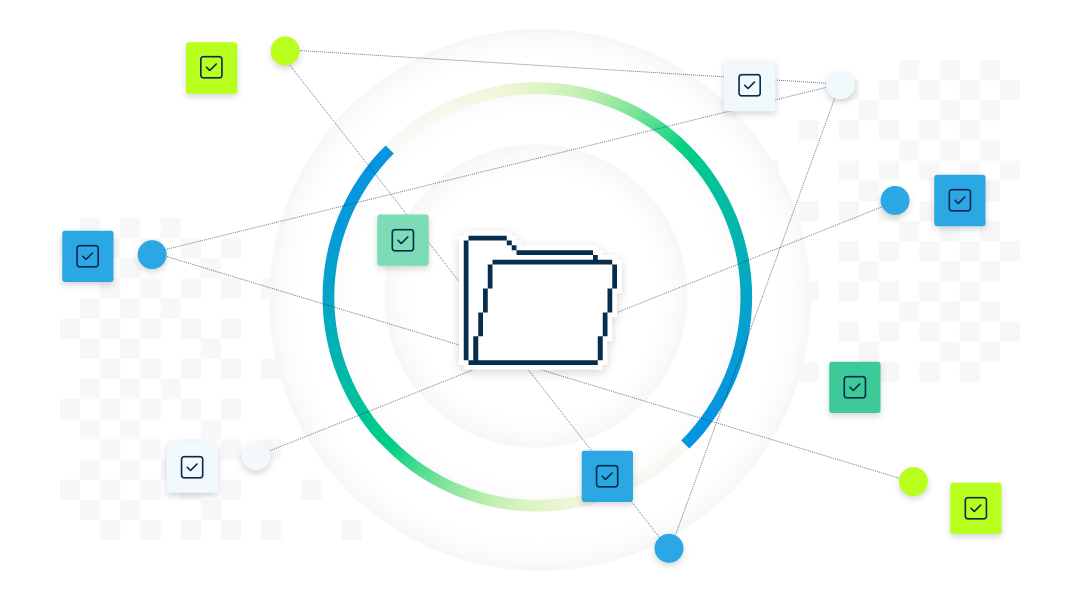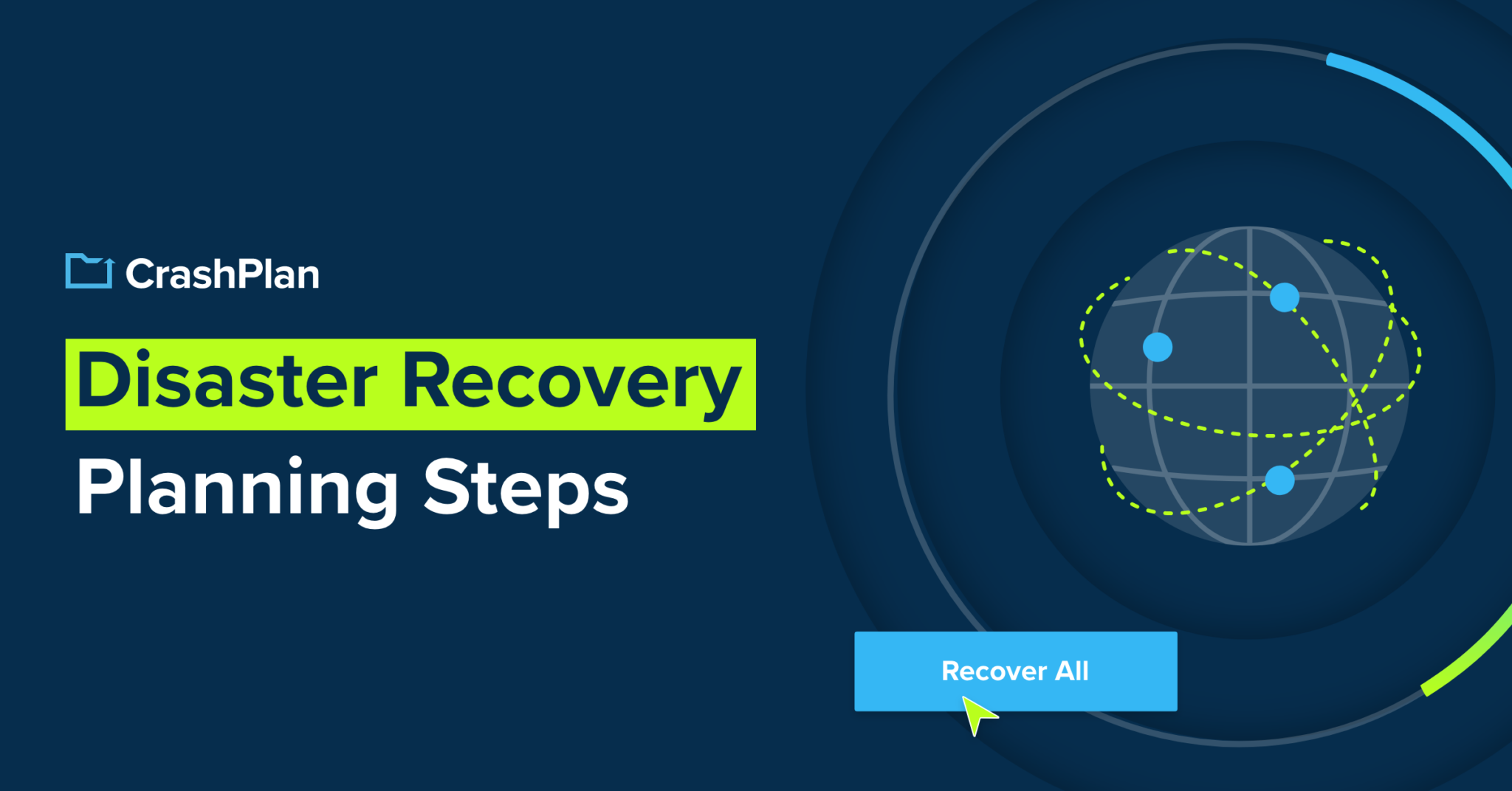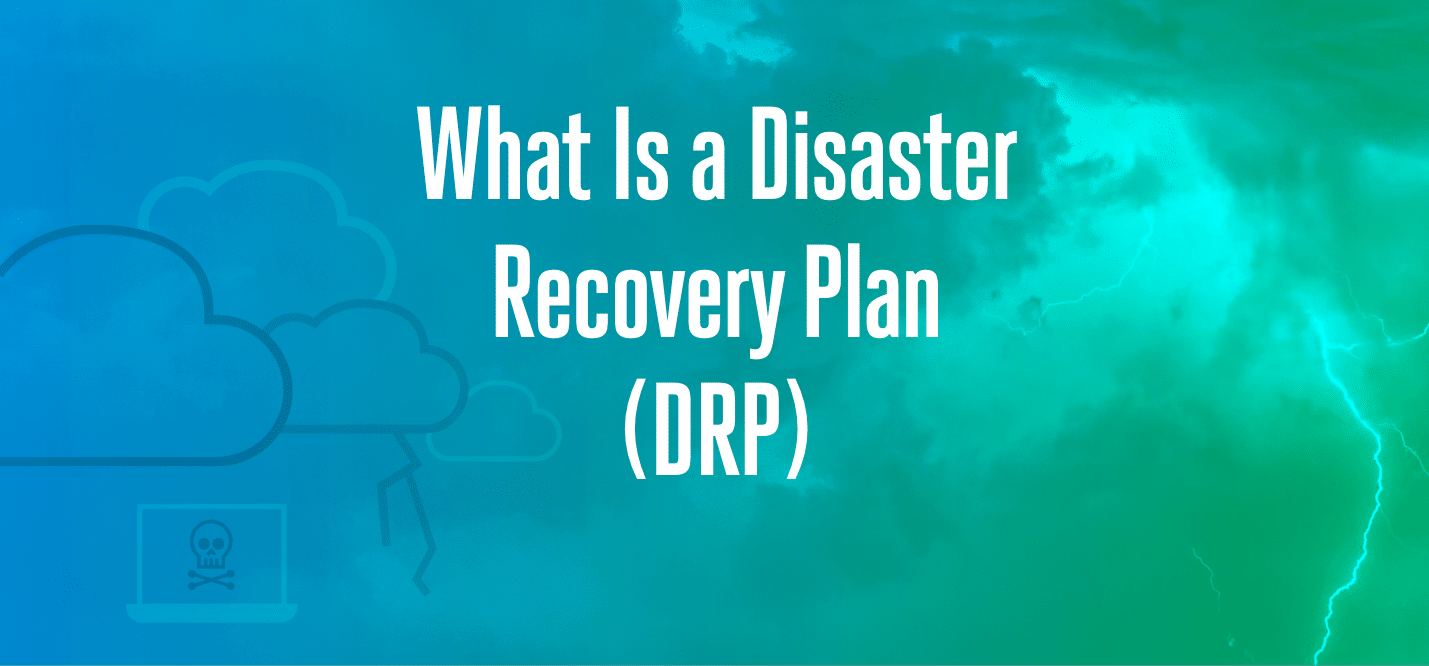
If you’re in IT, you’ve definitely heard business continuity plans (BCP) and disaster recovery plans (DRP) mentioned together. Sometimes, these two are merged into one acronym spelled out as “BCDR”. And while BCP and DRP are closely related, they solve for fundamentally distinct issues.
Before defining their differences, it’s vital to understand just how important a role BCP and DRP play in an organization. Specifically, BCP and DRP help an organization continue operating. Disruptions in business are inevitable. Without a plan, the core functions of the business cannot run smoothly, and this can impact the bottom line.
For instance, when natural disasters strike small to medium businesses, many are never able to recover. Even if they initially recover, 25% of SMBs are out of business within a year following a disaster. And the number of costly disasters is only increasing. NOAA (National Centers for Environmental Information) reports that in the last five years, the number of billion-plus dollar disasters (adjusted for inflation) in the United States has increased to an average of 17.8 events per year, whereas the average between 1980-2022 was just 7.9 events per year.
Today we’ll examine the Venn diagram between BCP and DRP; how they complement each other, overlap, and combine to help protect a business from significant disruption during disasters.
Let’s dive in.
What Is a Business Continuity Plan?
A business continuity plan spells out how an organization will continue to run while experiencing a disaster or major disruption. These can include things like natural disasters, data breaches, strong economic downturns, hardware failures, and human errors. The core goal of a business continuity plan is to keep the business’ core functions operational throughout the disruption.
A business continuity plan is tailored to the specific needs of your organization. However, the components listed below comprise the core of a strong plan.
Identification of critical business processes and resources
What are your business’ major functions? What resources are necessary to maintain those functions? Which processes should take precedence when a disaster occurs?
For example, if your firm is a food processing organization, some of the critical business processes could include:
- Sourcing raw materials
- Manufacturing products
- Inspecting products for safety
- Delivering finished products to retail stores and customers
- Employee management and payroll
Establish roles for participants and stakeholders
Another important component is a clause spelling out stakeholders and their roles. Knowing who’s responsible for what in times of disruption ensures a business runs smoothly throughout a disaster.
- An emergency preparedness manager is responsible for ensuring employees and customers are safe.
- An emergency management director develops and carries out the plan for the business to follow
- A disaster program manager is responsible for organizing other services, including shelters or triage centers.
- A large business may want to put together a committee of individuals responsible for different areas of the organization including technology and communication.
Detailed documentation
Every bit of data and workflow needs to be detailed and recorded in the BCP. When a disaster strikes, your organization will know exactly what to do and in which order since there’s a recorded blueprint decided upon beforehand. At minimum, evacuation policies need to be documented, contact lists need to be created and the participants and stakeholders listed above need to create plans for their areas of responsibility. If hazardous materials are at play, a separate plan needs to be made for handling. Disasters are chaotic; a documented plan helps make them less so. After a decision is made, write it down and store it somewhere that everyone knows about and can access.
Business impact analysis
What will the organization lose when a certain disruption strikes? For example, one cybersecurity report estimates small businesses lose almost $8,600 an hour during unplanned downtime, so being able to protect your business from downtime is paramount.
What specific losses will the organization incur? Organizations are faced with losses including declines to output and revenue, harmed reputation, impact of client or customer wellbeing, disruption to flow or delivery of services.
Defined (and documented) RTO and RPO
The recovery time objective (RTO) details how long systems, processes, or data can be impacted without fatally affecting a business. For instance, if your RTO is 3 hours, operations must be running again within 3 hours of a disaster.
Conversely, the recovery point objective (RPO) outlines how much data an organization is willing to lose during a disruption. For example, if an enterprise’s RPO is 15 minutes, the organization must have a data backup every 15 minutes to achieve the RPO goal.
When creating your BCP, you’ll need to set the RTO and define the RPO. The goal of both is to minimize the chances of data loss and speed up the resumption of operations. But, it is not possible to have zero downtime or zero data loss. RPO and RTO can’t be based on hope or idealism but have to be based on what is realistically achievable (in terms of feasibility and cost), balanced with what is critical for business viability.
Testing in advance of actual disruption
“No plan survives first contact with the enemy” so… it’s probably best if that first encounter happens in testing. You will not be able to control for every eventuality but, the more you test and prepare the smaller your risk surface is. That’s why it’s critical to test how your plan holds up during a simulated disaster. Unfortunately, 23% of organizations never test their BCP or DRP. Don’t be one of those 23%; please.
There are a few ways to test your BCP. First, you can create a checklist. Second, walk through the exercises. And third, you can produce simulations and ensure your plan is built to protect your organization to the fullest.
A BCP test seeks to find out the following:
- If the plan works when disaster strikes
- Gaps and opportunities within the plan
- Whether the business can meet its RTO and RPO goals
- Whether the emergency communication plan will be effective
Testing your plan simulating the disruptions most likely to affect your organization is crucial. Data breaches or loss, human error, climate disasters, hardware failure, and power outages are common disruptions to test in advance.
Testing should happen once per year, and a commonly employed mechanism to do so is a tabletop exercise.

What Is a Disaster Recovery Plan?
A disaster recovery plan is detailed documentation showing how a business can quickly recover operations after an unplanned incident. For example, a data breach disaster recovery plan might include how it will restore data access and IT infrastructure after the breach. Even though they are often used interchangeably the DRP is usually a component of the business’ larger BCP. Every disaster requires continuity but not every continuity issue is as the result of a disaster.
The main objectives of the DRP include the following:
- Keep infrastructure and human resources safe
- Guarantee continued business operations
- Minimize financial losses
- Protect organizational data
- Prevent reputation loss
- Limit liability
Below are the most vital components of the disaster recovery plan:
- A summary of critical processes, resources, and systems
- Stakeholders responsible for these processes, resources, and systems
- Detailed steps to recover, restart, and reconfigure the critical processes and systems
- RTO and RPO
- Any other emergency and mitigation steps that are essential to recovering after a disaster
Before creating the disaster recovery plan, you’ll need to conduct a disaster impact analysis and document risks associated with respective disasters. Doing so helps you identify which resources are needed where and how long it will take to bounce back.
How are BCP and DRP Similar?
BCP and DRP both work to ensure that an organization’s core functions are not hindered in times of disaster. They take a proactive approach to protect the organization and minimize loss during disasters. When creating both plans, you’ll need to account for business critical processes, systems, and resources. You’ll also need to define the RTO and the RPO when creating both plans. Another essential overlap between the two is the need for impact analysis and testing before making the plan official.
Finally, neither plan is set in stone. Business continuity and disaster recovery plans require constant review to align with changes in IT infrastructure, organizational goals, and existing threats.
How Do BCP and DRP Differ?
BCP and DRP complement each other and overlap during planning, but they have different functions. For starters, the business continuity plan is typically focused on organization-wide strategic planning. A disaster recovery plan, on the other hand, details how an organization can continue to run specifically during or after a disaster.
A BCP broadly covers every necessary detail, including the resources, processes, IT systems, and stakeholders across the business and covers a variety of issues which a business may face (including things like succession planning). More importantly, the BCP outlines step-by-step what needs to happen during and after a certain disaster.
A disaster recovery plan is a fundamental part of the business continuity plan. Often the DRP focuses on IT and how an organization will recover or restore IT infrastructure, applications, and systems critical to business operations following a disaster (physical, cyber, natural etc).
Put simply: the key difference is that the DRP assumes something has already happened, while the BCP includes components intended to prevent issues in the first place.
Be Ready with CrashPlan
Disaster and disruptions don’t discriminate based on whether you’re a small business or an enterprise. If disaster strikes and you’re not prepared, you risk heavy financial loss, damaged reputation, and potential liability.
Business continuity and disaster recovery plans add a layer of protection for when disasters occur. They’re a proactive approach to ensure you’re minimally impacted by disruption. Data recovery is a critical piece of this puzzle; how can your operations continue after a disaster without access to your data?
CrashPlan’s automatic cloud backup gives you immediate, easy access to endpoint data after hardware failure, natural disasters, data breaches, or any other calamity.
Find out today how CrashPlan helps you safeguard and access your organization’s data during disasters.




